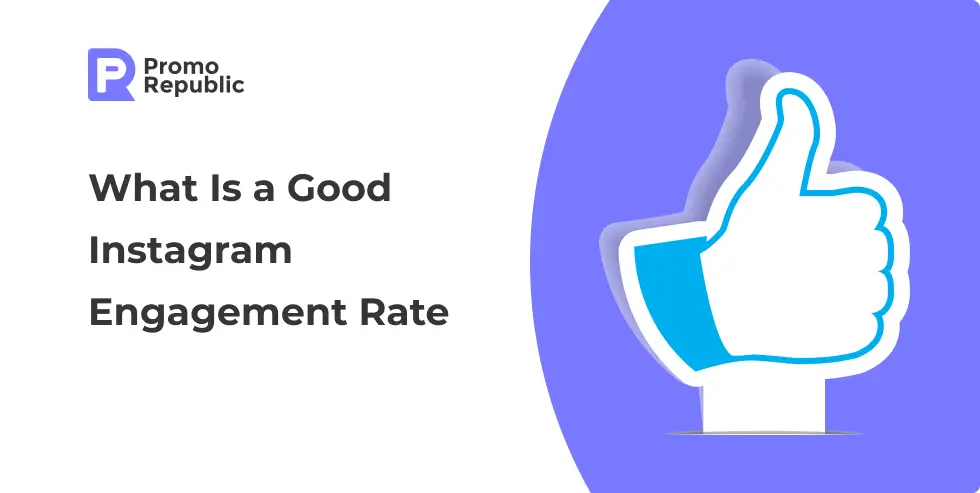How to create an effective LinkedIn marketing strategy [2021]

Content writer and blog editor at PromoRepublic
Although LinkedIn was founded in 2003 as a professional networking social media, it has moved on over time. In today’s business world, LinkedIn has become one of the most powerful marketing tools.
This transformation has required companies to develop an effective LinkedIn marketing strategy to gain a competitive advantage in their industries.
What sets LinkedIn apart from other social networks is that LinkedIn is extremely useful for B2B marketers. A significant portion of the B2B leads generated by social networks come from LinkedIn. This is partly because the platform is used by many leading professional influencers, industry decision-makers, and opinion leaders. Marketing on LinkedIn is a convenient way to make yourself known.
LinkedIn has more than 750 million users and is one of the best platforms for business marketing. It’s excellent for finding qualified sales leads as well as valuable human resources.
The right LinkedIn marketing campaign can help you build brand awareness, increase website traffic, attract potential customers and even make you an industry leader. However, promoting your brand on LinkedIn requires clearly defined goals and specific tactics.
Here, we’ll provide some steps to help you develop a successful strategy.
Set clear goals
There are many ways to use LinkedIn for your brand. But you should always keep your goals in mind because the type of content you publish and how you distribute it depends directly on them.
So, it’s important to think about your goals before you develop your LinkedIn digital marketing strategy.
The most common goals for using LinkedIn marketing include the following:
- Increase brand awareness and reputation
- Generate leads
- Increase sales
- Engage with the brand’s audience
You need to be clear about what your brand needs most at the moment.
Form your goals so that they are realistic, measurable, and time-bound. It may take time to achieve them, but it’s not difficult if you provide consistent, quality content while staying up-to-date on the latest developments in your industry. And, importantly, you should brainstorm and develop an effective work plan that meets your goals.
Your work plan may contain some general strategic considerations and volume limitations.
Understand your target audience
To publish great LinkedIn content, you need to know who you’re targeting. Developing an effective LinkedIn strategy requires a clear understanding of your target audience.
You can segment your audience by various parameters, such as name, location, and industry.
LinkedIn helps you find and find the right people for your business by using advanced search methods. You can also scroll through your connections to see other possible connections.
Keeping in mind that LinkedIn is primarily a B2B channel, you need to be clear about your audience. After researching your target audience, you should focus on the problems they are experiencing, including when and why they are experiencing these problems.
To understand your target audience, you can use analytics tools to learn more about your subscribers and page visitors.
The analytics sections will give you some insight into what your target audience is doing. You can then take further steps to develop your company page and create content that meets their specific needs.
Create a compelling company profile
Your company page will be your first interaction with your target audience. With a well-designed company page, you can provide a way to promote your products and services and increase brand awareness.
Your company page should help your visitors learn essential information about your business, including your products and services, employees, and headquarters. You should include your website, company size, specialization, and other details to increase your credibility.
Along with a memorable description text that mentions your added value to your industry, an appropriately sized logo for your company is very important, as the visual elements will make your page stand out.
LinkedIn allows you to preview what your page looks like so you can always look at yourself from a third-person perspective.
Remember, a complete and dynamic company page is the first step that will strengthen your image and enhance your professionalism.
Analyze your competitors’ pages
To improve your LinkedIn marketing strategy, it’s important to consider how your competitors behave on LinkedIn and how you compare to them.
LinkedIn has a great feature called “Companies to track.” Using it, you can view a list of companies that provide similar services in your industry. You’ll also be able to view some important metrics: the number of subscribers and its growth, as well as audience engagement.
This kind of analysis will help you clearly understand how you’re doing in your industry compared to your competitors. You can determine which activities are most effective and use them in your own LinkedIn marketing strategy.
Promoting your brand profile
It’s not enough to create an attractive profile with a striking cover and informative description. You also need to engage your target audience. Increasing your visibility on this social network is critical to implementing an effective LinkedIn marketing strategy.
All of your updates should appear in your subscribers’ LinkedIn feed, thereby increasing the reach of your publications. Plus, a large audience on LinkedIn increases your company’s credibility and reputation.
The easiest and fastest way to get what you want is to ask your company staff to sign up for a corporate LinkedIn profile. You should also add a relevant button in the email signature of brochures, on the company website, and on your blog. That way, your colleagues, clients, and audience on the company’s website and other social networks can also subscribe to it on LinkedIn.
Publish interesting content
Content is key to your LinkedIn marketing strategy. Quality, fresh and original content will get you many subscribers and, more importantly, help you retain and engage with them. That’s why you should share meaningful content that will resonate with your audience.
Creating content for LinkedIn is much more than publishing promotional posts. Your posts should contain helpful tips, tricks, and information relevant to your industry if you want to drive traffic to your page. Research shows that LinkedIn users respond well to educational content.
You can focus on subjects on which you can give good insight and provide helpful information. Hands-on articles can be an effective way to provide educational content. Also, be sure to use appropriate hashtags for visibility.
Your content should also help keep your subscribers up to date on the latest developments in your industry. In addition, you can devote some time to thought-provoking articles. You can share your opinions on the latest developments in your industry or innovative solutions to the everyday problems of your target audience.
As you reflect on the quality of your content, you must remember that too much self-promotion can negatively impact your marketing campaigns.
When it comes to the content you provide, social media agencies can help you. Agencies know how to deliver your original ideas in the most exciting way.
Case studies, white papers, infographics, and impulse publications are examples of the types of content that work well on LinkedIn. Remember that visuals are essential. You must include graphics and images to make them memorable.
In addition, LinkedIn recently introduced Stories, a feature that has become popular on many social media platforms. It’s a great idea.
You can use LinkedIn Stories to share your behind-the-scenes events and your work on ongoing projects. Hosting a Q&A session is another way to come up with exciting content with this new feature.
Expand your network on LinkedIn
To reach a wider audience and increase your growth opportunities, it’s vital to expand your network on LinkedIn. After all, it’s your network that reflects the net worth of your business.
Relationship building is a great marketing strategy if you build and manage relationships properly.
Some tips for expanding your network include sending personalized connection requests to potential clients, connecting to people you’ve recently met offline with personalized requests, connecting to influencers, and joining LinkedIn groups in your target market.
LinkedIn groups are important to LinkedIn’s marketing strategy for businesses because it’s a great way to find your ideal customers.
Expanding your network increases your visibility, but it’s not enough. You should continue to engage with your connections and potential clients to build trust. You need to take wise steps to get people to reach out to you when they are ready to purchase a product or service.
What you can do is learn about your contacts by connecting via private message, commenting on their status updates and articles, offering to help them in a kind manner.
Another nice thing to do is share your potential clients’ content when they post something valuable and exciting. Making connections through each other’s content will help you build relationships with other brands. All of these tips mentioned above may take time, but in the end, they will help make your LinkedIn marketing strategy more effective.
Measure your success
At the end of the development and implementation of your strategy, there should always be an analysis of your results. This way, you can easily and visually check whether your strategy is working.
Understanding your LinkedIn marketing activity metrics, demographics, profile views, and other data will help you understand which activities are successful and which should be avoided or worked on.
LinkedIn has built-in analytics on the management page. Here you can get information about your visitors, updates, and subscribers. With additional analytics tools, you can track your engagement: how often your audience likes something, comments or shares your content, your conversions, how often your follower interacts with your product or service, how often the link to your website is clicked, and so on.
However, you may need some guidance to analyze your strategy fully. So it’s better to use a professional analytics tool.
You can take a look at social media tools to explore their analytics sections. With professional help, you can properly analyze your LinkedIn marketing activities and get more tips on your strategy.
Conclusion
LinkedIn has enormous potential to help brands stand out in the business world. With a well-designed LinkedIn marketing strategy, you can leverage the potential of this platform to benefit your brand. Digital marketing agencies can also easily support your strategy depending on what is better for your business.
FAQ
What is LinkedIn marketing strategy?
A LinkedIn marketing strategy is the same as a social media strategy, only explicitly tailored for this platform and a B2B audience. You need it to achieve your brand goals on this platform – for example, to increase brand awareness, find new customers or employees. In a LinkedIn marketing strategy, you describe all the steps you need to go through to develop your brand on this social network.
What are the 4 types of marketing strategies?
In fact, there are many more marketing strategies than 4. But we will cite just that number, choosing, for example:
- Cause marketing strategy (companies develop their social networks to raise funds or spread information, getting new subscribers and leads in return, for example)
- Relationship marketing strategy (a company develops long-term relationships with its customers)
- Transactional marketing strategy (retailers use different methods to increase sales, such as discounts and promotions)
- Undercover marketing strategy (companies advertise their product or service indirectly, without showing that they are promoting it)
How to develop a LinkedIn marketing strategy?
There are a few simple steps:
- Set clear goals
- Understand your target audience
- Create a compelling company profile
- Analyze your competitors’ pages
- Promoting your brand profile
- Publish interesting content
- Expand your network on LinkedIn
- Measure your success
How to use LinkedIn for B2B marketing?
To use LinkedIn for B2B marketing, a company needs:
- Create a company profile
- Optimize it
- Develop a schedule for content publication
- Create unique and engaging content
- Promote it
- Automate interaction with customers
- Promote your company profile
How do I increase my followers on LinkedIn?
All you need to do is:
- Fill out company information on your LinkedIn profile
- Develop a content publishing calendar
- Post unique and exciting content regularly and share it with your audience
- Promote your company profile on LinkedIn to increase your reach
- Experiment and use different types of content











